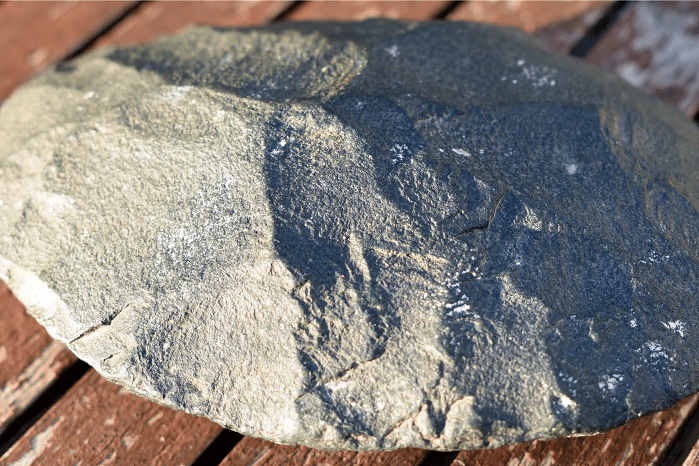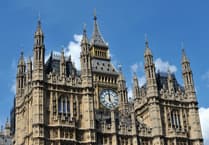By Jim Pentney
It was 1985 and we had just moved into a fine terraced house with a Georgian façade where over the next twenty years layer upon layer of the past there was uncovered.
To set the scene, Launceston, locally referred to as ‘Lanson’, was once the county town of Cornwall and the location of the assize court where the Cornish gentry would have their town houses and consult their lawyers. Up until the Reform Act of 1832 four MPs sat in Parliament, two for Dunheved, today’s town on the volcanic hill dominated by the high Norman castle keep, and two for Newport down below in the valley of the River Kensey a mile or so from where it joins the Tamar at Polson.
From Newport Square, the MPs of the ’rotten borough’ were announced at the ‘Roundhouse’ after the handful of voters, ‘potwallopers - Newport men who boiled their own pot’ had probably been satisfied in the White Horse Inn, from where the hill climbs to St Stephens - When Dunheved was a fursey down St Stephens was a market town - Saxon Wessex pushed west in 928AD and Athelstan held a whitten or parliament at Lawhitten. Seven collegiate churches were founded in Cornwall, one at St.Stephens, where by the end of the tenth century a mint was established in the reign of Aethelred the Unready.
At the foot of St Stephen’s Hill, a stone’s throw from Newport Square, stands a terrace of six houses, each quite architecturally distinct. Uncovered in the rotten timbers of the balcony of Hopecote, the year 1800 was marked. A possible explanation comes from the account of a court case in the town some years later. The property had been in the Edgecombe family for generations. In the 1790s, before setting sail from Plymouth for the Caribbean, young Thomas Edgecombe, in a quayside tavern, had been persuaded to sell his inheritance to John Tuke, a relative by marriage. On his return in 1803 Thomas realised he had been swindled. Old Hope Cottage at Newport by then had been upgraded to Hopecote, a fine double fronted town house with a balcony and arched hallway leading to a hanging staircase, presumably funded by Tuke’s profiteering.
Not only the balcony but the floorboards in the dining room were rotten and needed to be taken up revealing a compacted earth floor scattered with oyster shell, broken clay pipe and even indication of post holes in darker soil. Our little daughter, who was about five at the time, found a small thin coin with a cross on one side. Such crossed penny currency existed for many centuries through the Middle Ages.
At the County Museum in Truro we were told, “if this is from St Stephen’s mint it would be of national importance. You should take it to the British Museum.”
The expert in London dismissed it as Saxon: “It’s Henry VIII. You can tell because he devalued the currency by reducing the amount of silver. Being less pure, they corrode more.” Still it was certainly interesting, particularly when considering the dramatic upheavals in Newport and across the whole country in the 1530s.
The bottom of the garden drops to a water meadow beside the River Kensey, from where St. Thomas Church and the Priory Ruins are found over the pretty cobbled clapper Priors Bridge.
Launceston Priory was built around 1126 to replace the earlier Saxon foundation of secular canons at St. Stephens. In 1104, the Bishop of Exeter William de Warlewash announced, “let the present age know that Ralph, deacon of the church of St. Stephens, gave up the deanery to me, William the Bishop, and I have given the whole to the Regular Canons…”
Described as one of the largest religious buildings the in the South West during the Middle Ages, certainly the present church stands on only a small fraction of the area covered by the Priory. The ruins behind the church are a faint reminder, as are stones of a darker, greener grey than granite scattered around the town. The Augustinian, ‘Black Canons’ also managed the leper hospital of St. Leonards downstream at Polson. As an organisation it was the largest property holder in Cornwall with manors along the north coast from Kilkhampton, through St. Gennys to St. Juliot, south eastward to St Breward and St. Neot, Liskeard and even on the south coast at Tallend and Looe, as well as over the Tamar into Devon.
“None,” claimed Brewer, “were more greedy in adding farm to farm; none less scrupulous in obtaining grants of land from their patrons…”
“A trend in the years after 1529 was the upsurge of anti-monastic litigation. In 1532-3 Prior Shere of Launceston was brought before Chancery, alleged to have failed to repay a loan. Hewas again before the court when Joan Escott accused him of retaining tithes which the Priory had leased to her late husband and herself and in 1537 he was accused by Thomas Ashridge of claiming excessive mortuary after the death of his servant.”
Newport itself meanwhile prospered as a borough through the wool and tanning trade, matching Dunheved in sending two Members to Parliament in November 1529, the electorate being five residents who paid ‘scot and lot’ rates and claiming ancient rights. Tan pits and wool stores were managed by Flemish workmen – one John Jarpenfelt was the bailiff in 1502. Back to the excavation under the dining room, close by the coin was a trade token, identified to be Flemish.
Like so many others, the end of Launceston Priory came in 1539. In 1536 the pliant Prior Shere made grants of Priory property to agents of the Crown. Most of the manors went to the Duke of Cornwall or those who had assisted in the Dissolution. In a deed dated April 2, 1550, King Edward VI conveyed; All that our rectory and Church of St. Thomas near Launceston in our County of Cornwall, with all its appurtenances, to the Priory of Launceston, now dissolved… and all houses, tithe barns, glebe lands, meadows…etcetera. The Edgecombes appear to have benefited in Tudor times, one as Custodian of the Castle.
Through the kitchen at the back of the house clad with hanging slate, a cobbled yard leads to a long-walled garden, where on one side there was a rockery. “What’s that?” A symmetrical oval stone the size of a man’s palm, dark and heavy napped with large flakes. “It’s a hand axe.”
On the back stairs of the British Museum it was discounted as an ‘explorer’s throwaway, relatively modern.
“Nonsense, it’s hard rock. Look at the erosion on these edges. That takes a long time, tens of thousands of years of sand blowing over it.”
Only a dozen miles from Launceston, we were inside the reconstructed round house at Trewortha, where steaks were cooking on a hot stone, spinning and weaving were being demonstrated and a bearded man clad in skins was skilfully napping flint. We showed him the hand axe.
“No one alive has the skill to do this today,” he proclaimed.
In his 1929 essay ‘Twelve Men’s Moor’, the Cornish historian Charles Henderson wrote: ‘There are few more beautiful stretches of wild country in Britain than the eastern part of the Cornish highlands… in the heart lies Twelve Men’s Moor, cradled among mighty rock-strewn tors.. below them the ruins of primitive settlements dating from prehistoric times… the whole region teems with the mystery of the past… The Prior and canons of Launceston gained the over-lordship and in the Cartulary of the Priory… an agreement is dated Wednesday, the Vigil of St. Peter-in-Cathedra (1284) between Prior Henry and twelve tenants of the moor... one with the name William Trewortha.’
Knowing it to be Basalt, where could it have come from? Similar examples have been found in East Africa linked to early human migrations of half a million years ago! So how had it come to be in a Launceston rockery?
The previous owners of Hopecote were three sisters, the Miss Boultbees, who ran it as a guesthouse. Climbing the stairs, on the wall hung portraits of generations of clergymen. We learnt their father had been a local vicar. Could he have been a missionary at some time?
Yes indeed, in a parish record there he was. Born in 1885, after being ordained in 1908 he joined the Bush Brotherhood of St. Barnabas, an order that recruited itinerant single clergymen to ‘preach like apostles and ride like cowboys’ in the Outback, tin mining Northern Territory based at Herberton in Queensland - something of an Edwardian, Anglican, VSO of its time spreading European ‘civilisation’ and Christianity. One wonders how the aboriginal people, whose land it had been for at least fifty thousand years, viewed the Brotherhood and were treated.
Kept as a memento, there can be little doubt it is there where the hand axe originated. Intrusions of volcanic Basalt are present at Undara, a protected archaeological site 100 miles from Herberton. Rev. Boultbees’ clerical career went on to include both World Wars, his retirement parish being just over the Tamar at Lifton.
• Do you have a story to share? Write to us at [email protected]





Comments
This article has no comments yet. Be the first to leave a comment.